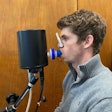
Inhalers used to treat lung diseases such as COPD and asthma have generated more than two million metric tons of carbon emissions annually over the past decade. That’s roughly equivalent to 530,000 gas-powered cars on the road each year.
That’s according to a study, “Inhaler-Related Greenhouse Gas Emissions in the U.S.,” published in JAMA and conducted by researchers at the University of California – Los Angeles.
The study analyzed emissions from the three types of inhalers approved for COPD and asthma from 2014 to 2024. The researchers found metered-dose inhalers were the most harmful to the environment, accounting for 98% of emissions over a 10-year period. These inhalers contain hydrofluoroalkane propellants, which are the same greenhouse gases that are widely used in products such as aerosol sprays.
The other types of inhalers were found to be less harmful as they can deliver the medication without the need for propellants.
“Inhalers add to the growing carbon footprint of the U.S. health care system, putting many patients with chronic respiratory disease at risk,” William Feldman, MD, DPhil, MPH, pulmonologist and health services researcher at the David Geffen School of Medicine at UCLA, said in a news release. “On the upside, there is tremendous opportunity to make changes that protect both patients and the planet by utilizing lower-emission alternatives.”
Data for the study was gathered through a comprehensive database capturing inhaler prescriptions at the National Drug Code level. Emissions were estimated using validated academic studies and were analyzed by drug type, device type, propellant type, therapeutic class, branded status, manufacturer, payer and pharmacy benefit manager.
Researchers plan to expand their research to examine inhaler-related emissions in specific patient populations, such as the Medicaid population. They will also compare clinical outcomes between lower- and higher-emission inhalers in the same therapeutic class and explore pricing and patenting strategies that pharmaceutical companies can use as they roll out lower-emission inhaler technologies.
“A key first step to driving change is understanding the true scale of the problem,” said Dr. Feldman, who is also lead author of the study. “From there, we can identify what’s fueling these emissions and develop targeted strategies to reduce them — benefiting both patients and the environment.”























